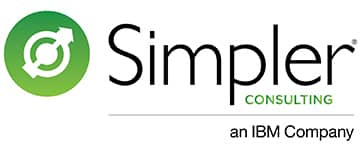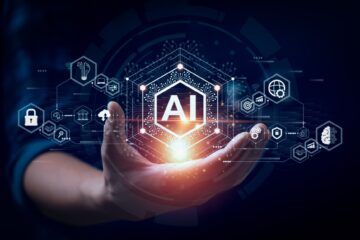
Applying Industry 4.0 thinking to the VSA process doesn’t have to be complex. You can examine your current-state business with simple questions.
The Next Frontier of Value Stream Analysis
Since the late 1990s and the publication of John Shook’s and Mike Rother’s “Learning to See,” lean practitioners have been using the Value Stream Analysis (VSA) process to understand their work processes and expose opportunities for improvement via waste elimination. VSA has been a powerful way to understand the actual flow of goods or services through the eyes of the customer. The process also builds stakeholder alignment on the breakthrough changes needed to build a “least-waste way” future-state process to generate customer value.
In my experience, most VSA teams typically do robust work analyzing the flow of the goods or services being produced and the associated wastes present. However, they usually do not thoroughly explore the flow of data and information supporting the process(es). At best, data transactions into and out of an enterprise resource planning (ERP) system, and maybe production scheduling points are captured in the current state mapping. Rarely, if ever, does the analysis work examine whether data capture and insight generation opportunities are underutilized or entirely missing from the current state. Perhaps driven by “we don’t know what we don’t know,” the application of VSA has not fully evolved to include the forward-thinking of Industry 4.0 application.
IBM Institute for Business Value research has shown that two out of three manufacturers (66%) using Industry 4.0 report productivity gains greater than 6% annually. However, only relatively few organizations (29%) are using their production data to draw insights for continuous improvement. It is time for more manufacturers to evolve their VSA work beyond the typical examination and elimination of the eight wastes (*). A comprehensive Industry 4.0 perspective must be added to the traditional VSA process to realize a business’s potential more fully.
At its essence, Industry 4.0 is about capturing and converting data to useful information and actionable insights that enable faster and better decision making:

We can expose tremendous improvement opportunities to build a better, more intelligent value stream future state with simple questions such as:
- What data exists that we are not using to identify improvement
opportunities? or - What information would better support associates in the execution
of their work? or - What insights would we need to make better decisions faster? or
- What would we like to learn from the “voice of the process”? or
- What additional insights could we use to proactively identify
abnormalities with equipment or products? or - What real-time information are we missing that would make us more
effective?
Examples of Industry 4.0 technologies that might be built into the future state value stream resulting from this visionary thinking might include:
Supply Chain applications
- Product tracking via RFID technologies
- Supply Chain control tower utilization to increase visibility to supply issues and enable agile corrective action cycles
- Blockchain application to simplify inbound material tracking and simplify in transactional processes
Industrial Internet of Things (IIoT) applications
- Asset performance monitoring (temperature, pressure,
electrical consumption, vibration, etc.) to trigger preventive interventions - Machine cycle tracking to enhance preventive maintenance execution
- Realtime Overall Equipment Effectiveness (OEE) monitoring and insight generation
- Safety risks detection such as confided space entry or pedestrian entry into high-traffic zones via smart wearables
Augmented Intelligence and Analytics
- Video observation and analytics to detect abnormalities in components with which associates might be struggling to maintain cycle time performance or possibly beginning to produce defects
- Standard Work variance by workstation via video and machine learning
- Deploying mobile devices to provide associates with up-to-the-minute work instructions
Robotics and Process Automation
- Automation and robots / co-bots to free up human talent from repetitive tasks and ergonomic risks
- Visual inspection and analysis, including feedback to upstream operations
- Automated production reporting or the elimination of ERP transactions enabled by increased velocity through collocated operations
- Actual customer demand /consumption tied back to triggering initiation of your replenishment activities
Most manufacturing operations have executed multiple passes of improvement through
traditional Value Stream Analysis driven improvement and have yielded impressive benefits. The time-proven VSA process should now move beyond waste elimination to achieve even more with
technology-enabled lean thinking. This is not the application of technology for technology’s sake, but rather leveraging the power of Industry 4.0 technologies and processes to deliver value even more effectively to customers.
Contact me to learn more about how Value Stream Analysis 4.0 can help your organization succeed.
(*) The traditional “eight wastes” include: downtime, overproduction, waiting, non-utilization of human talent, transportation, inventory, motion, and excess processing.

Jim Little
Partner, Industrial Sector
Simpler Consulting, an IBM Company
+1-512-568-6602
Jlittle5@us.ibm.com



